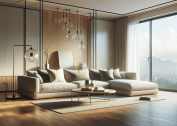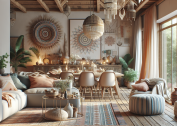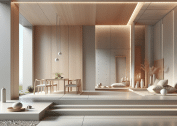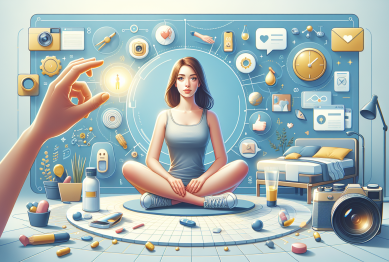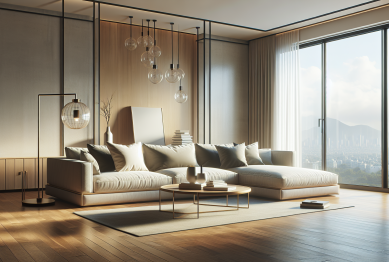In this article, we’ll explore the psychology of color in your home office, how different colors can influence your mood and productivity, and tips on selecting the right colors for your workspace.
In recent years, the concept of home offices has shifted. Once simple workspaces, they have now evolved into hubs of productivity and well-being. With the rise of remote work, many professionals are rethinking how their environment influences both work performance and mental health. One of the most impactful yet often overlooked elements of a workspace is color.
Colors can significantly affect our mood, creativity, and work efficiency. By understanding the psychology behind color choices, you can create a home office that boosts productivity and promotes well-being.
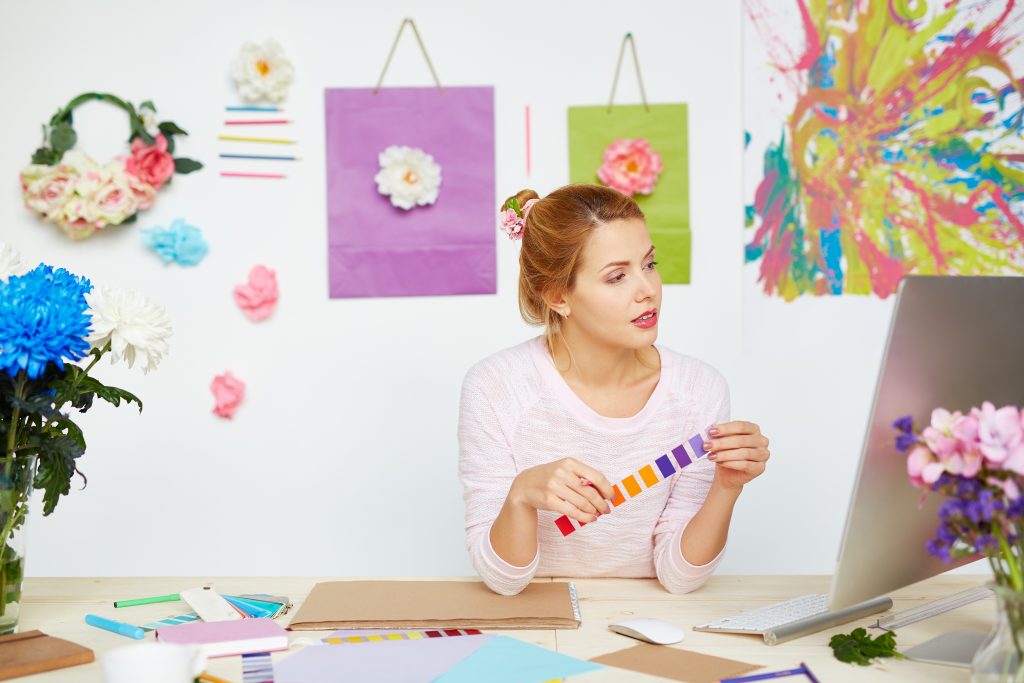
The Power of Color: Why It Matters in Your Home Office
Color psychology is the study of how different colors influence our emotions, behaviors, and even our performance. Research has shown that colors can affect our moods, energy levels, and cognitive functions in various ways. When applied to a home office, the right color palette can create an environment conducive to productivity, creativity, and mental well-being.
Whether you’re designing your home office from scratch or giving it a refresh, choosing the right colors can significantly enhance your working environment. The right color choices not only make the space visually appealing but can also improve focus, reduce stress, and inspire creativity.
Popular Colors and Their Psychological Effects on Productivity
Here are some common colors used in home office spaces and how they can impact your productivity and mental well-being:
1. Blue: Calm and Focused
Blue is often associated with tranquility, stability, and focus. It’s one of the most popular color choices for home offices because it promotes calmness and concentration, making it ideal for tasks that require mental clarity, such as reading, writing, or analysis.
-
Psychological Effects: Blue has been shown to lower blood pressure and reduce stress, helping to create a relaxed and productive environment.
-
Best For: Tasks requiring focus, meetings, and long hours of work.
-
Tip: Lighter shades of blue can enhance concentration, while deeper blues can give the space a more professional and calming atmosphere.
2. Yellow: Energizing and Creative
Yellow is the color of sunshine and optimism. It’s an energizing color that can boost creativity and stimulate mental activity, making it an excellent choice for creative professionals or anyone looking to spark innovative thinking.
-
Psychological Effects: Yellow is known to trigger feelings of happiness and energy. It can stimulate the left side of the brain, which is responsible for analytical thinking and problem-solving.
-
Best For: Brainstorming sessions, creative work, and tasks that involve generating new ideas.
-
Tip: Use yellow in moderation, as too much yellow can lead to anxiety or overstimulation. Consider accent walls or decorative items in yellow for a more balanced effect.
3. Green: Balanced and Restorative
Green is often associated with nature, balance, and healing. It’s a color that promotes harmony and relaxation, making it perfect for creating a calming environment in your home office.
-
Psychological Effects: Green has been shown to reduce anxiety and eye strain, making it ideal for long hours of screen time. It can also boost focus and productivity, especially for tasks that require attention to detail.
-
Best For: Administrative tasks, reading, and long working hours that require calmness and mental clarity.
-
Tip: Incorporate plants or green accents into your office for both aesthetic appeal and a natural, calming atmosphere.
4. Red: Motivating and Stimulating
Red is a powerful color often associated with energy, passion, and action. It can increase heart rate and stimulate a sense of urgency, making it ideal for environments that require high energy and motivation.
-
Psychological Effects: Red can boost physical energy and focus, but it can also cause feelings of stress if overused. It’s a great color for motivating you to take action, but be careful not to overwhelm the space with too much red.
-
Best For: Tasks that require high energy and enthusiasm, such as sales calls or when meeting tight deadlines.
-
Tip: Use red as an accent color rather than the primary color in your home office to avoid feelings of restlessness or anxiety.
5. Gray: Neutral and Professional
Gray is often seen as a neutral, professional, and sophisticated color. It’s frequently used in corporate offices, but it can also work well in a home office when paired with more vibrant accents. Gray can create a serene and minimalist environment, allowing you to focus on your tasks without distractions.
-
Psychological Effects: While gray can help reduce distractions and create a calm environment, too much gray can feel cold or dreary, so it’s best used in moderation.
-
Best For: Professional spaces, concentration-heavy tasks, and when you need a neutral backdrop for creativity.
-
Tip: Combine gray with pops of color like orange or yellow to bring warmth and vibrancy to the space.
How to Choose the Right Colors Based on Your Work Style
The color choices you make in your home office should align with the type of work you do. Here’s how to choose colors based on your work style:
1. For Creative Professionals
If you work in a creative field, such as graphic design, writing, or marketing, colors like yellow and orange can stimulate creativity and help you think outside the box. These colors encourage brain activity and are known to inspire new ideas.
2. For Analytical or Administrative Work
For tasks that require concentration, focus, and detail—such as data analysis, writing reports, or managing accounts—colors like blue and green are ideal. They help create a calm environment that minimizes stress and supports deep thinking.
3. For High-Energy Work
If your work is fast-paced and involves a lot of decision-making or client interactions—such as sales, management, or project coordination—red can provide the energy and urgency you need. Use it sparingly to avoid burnout, and complement it with neutral tones like gray or beige to balance the intensity.
4. For Consulting or Coaching
For those in advisory roles, like consulting or coaching, green and blue are the perfect choices. They evoke trust and reliability, qualities that are essential in these types of careers. Additionally, green helps keep you and your clients calm during potentially high-pressure conversations.
Combining Colors for Maximum Impact
While individual colors can have powerful effects, combining different colors strategically can enhance the overall atmosphere in your home office. Here are a few tips on creating a balanced color scheme:
-
Pairing Blue and Green: Combining blue and green promotes both focus and relaxation, making it a great combo for productivity and mental clarity.
-
Adding Accents: Use accent colors to energize your workspace without overwhelming it. For example, a green base with red accents can create a balanced environment with both calm and motivation.
-
Neutral Backdrop with Bold Highlights: If you prefer a minimalist office, use neutral colors like gray or white as your primary palette and add splashes of vibrant colors like yellow or orange in accessories, furniture, or artwork.
Conclusion
Understanding the psychology of color in your home office can be a game-changer for both productivity and well-being. By carefully selecting colors that align with your work style, you can create an environment that enhances focus, reduces stress, and even sparks creativity.
Remember, the key to using color effectively is moderation. Overpowering your space with too many bright or intense colors can lead to stress or overstimulation. Instead, aim for a balanced color scheme that supports both your professional needs and personal comfort.
Reference
- Effects of Color on Mood & Productivity – https://www.researchgate.net
- Color Psychology & Office Productivity – https://www.corporatewellnessmagazine.com
- cientific Reviews on Color in the Work Environment – https://www.posturite.co.uk




